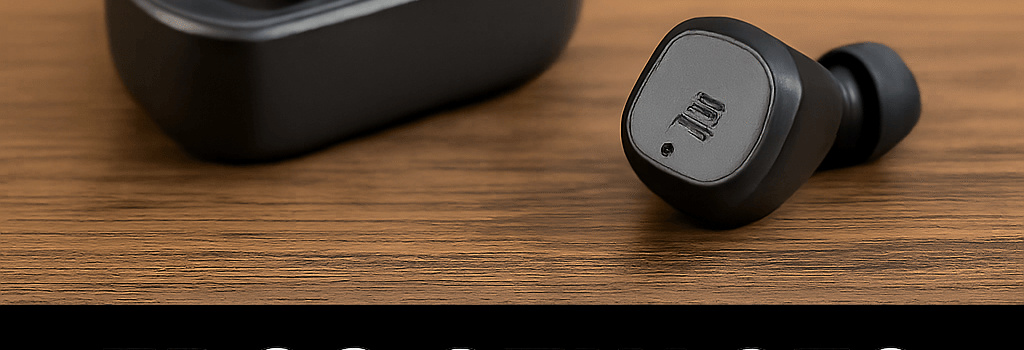EPOS GTW 270 Earbuds Left Without Charging Case

I went for a run this morning with my iPhone tethered to wired earbuds, and the jostling cable was more than an annoyance—it was a stark reminder that my favorite rediscovered gadget, the EPOS GTW 270 wireless earbuds, is now completely unusable without its charging and pairing case. What started as a weekend rediscovery of a solid pair of Bluetooth earbuds has become a lesson in how corporate strategy and product support lifecycles can render hardware obsolete the moment you lose a small proprietary part.
Rediscovery of the GTW 270: Performance and Early Impressions
Released in 2021 at a list price of $200, the GTW 270 was EPOS’s first consumer-oriented wireless earbud aimed at gamers and audio enthusiasts. Key specifications include Bluetooth 5.1 connectivity, support for SBC and AAC codecs (with low-latency proprietary profiles for gaming), an IPX4 splash-resistant rating, 8 mm dynamic drivers tuned for clarity, and onboard MEMS microphones with acoustic echo cancellation. The earbuds themselves house a 55 mAh Li-ion cell, providing up to six hours of playback on a single charge; combined with the 500 mAh USB-C charging case, you get an additional 18–20 hours of runtime.
In practice, my PC occasionally dropped the connection—likely a driver or codec mismatch—but on my iPhone the pairing was seamless and stable. Fast charging delivered an hour of playback from a 15-minute charge, and a full recharge took roughly two hours via a standard 5 V/500 mA USB-C cable. There was no Qi-wireless option, so the case relied entirely on wired power.
Technical Specifications and Charging Standards
- Battery capacity: Earbuds 55 mAh each; case 500 mAh Li-ion cell
- Charging interface: USB-C 5 V/500 mA; no Qi-wireless support
- Wireless protocol: Bluetooth 5.1 with SBC/AAC codecs; proprietary low-latency gaming profile (~60 ms)
- Audio drivers: 8 mm dynamic with frequency response 20 Hz–20 kHz
- Ingress protection: IPX4 splash-resistant
- Onboard controls: Touch gestures for play/pause/track skip, voice assistant access
In addition, the earbuds support firmware updates via EPOS’s desktop utility, EPOS Connect, which uses Bluetooth LE for DFU (Device Firmware Update) operations. Without the case, though, neither charging nor RF advertisement for pairing is possible, rendering the DFU path inaccessible.
Corporate Lifecycle and Aftermarket Support
EPOS emerged in 2020 when Danish hearing-health giant Demant spun off its joint venture with Sennheiser Communications. The ambition was to craft high-end headsets and earbuds for gaming and enterprise markets. However, after pandemic-driven demand in 2020, the gaming headset sector cooled sharply. By August 2023, Demant announced a gradual wind-down of the EPOS consumer division, completing the exit in 2024.
“Following extraordinary demand sparked by the pandemic, the gaming market has slowed significantly due to weak consumer sentiment, and we do not see a viable path to profitability without significant investments in products, brand, and distribution,” said Demant CEO Søren Nielsen.
Inventory and replacement parts dwindled soon after. While EPOS originally sold standalone GTW 270 charging cases through its US online store, today that URL 404s, and official spare parts have effectively vanished. An EPOS spokesperson concedes that regional availability of replacement cases varies and advises customers to file support tickets for repairs—an impractical option when the product line is discontinued.
Lifecycle Management and Environmental Impact
The premature obsolescence of the GTW 270 case raises broader e-waste concerns. Each stranded earbud is essentially a sealed Li-ion cell, a touch sensor, a wireless radio, and a microcontroller—components that could otherwise be repurposed or recycled. Modern product design for sustainability encourages modularity and long-term parts availability; by contrast, EPOS’s rapid wind-down creates orphaned hardware and inflates electronic waste.
Universal Charging Solutions: A Path Forward
What if earbuds could charge and pair independently of a proprietary case? Designers could integrate USB-C ports on each bud or adopt Qi-enabled contacts on both buds and case. Such approaches add size or cost but dramatically improve resilience when a case is lost. Industry bodies like the USB Implementers Forum and the Wireless Power Consortium could define accessory-level standards, allowing third-party or universal cases to support multiple models across brands.
Expert Opinion: Standardization in Accessory Ecosystems
“Many companies chase quarterly growth and neglect long-term customer loyalty. When a missing accessory turns a perfectly good device into e-waste, it highlights the need for open standards,” said Amber Case, founder of the Calm Tech Institute. “Bosch’s lifetime support model proves that sustained parts availability can drive customer retention and profitability over decades.”
Conclusions and Recommendations
The stranded GTW 270 is more than an isolated inconvenience: it exemplifies how short product lifecycles and proprietary dependencies undermine user experience and sustainability. For consumers, the lesson is to verify parts availability before investing in niche accessories. For manufacturers, embracing universal charging standards or at least guaranteeing spare-part availability for five-plus years would enhance brand loyalty and reduce e-waste.
Until then, I’ll limp along with my wired earphones—but I’ll be watching future gadget launches for open, repairable designs that survive the twists and turns of corporate strategy.